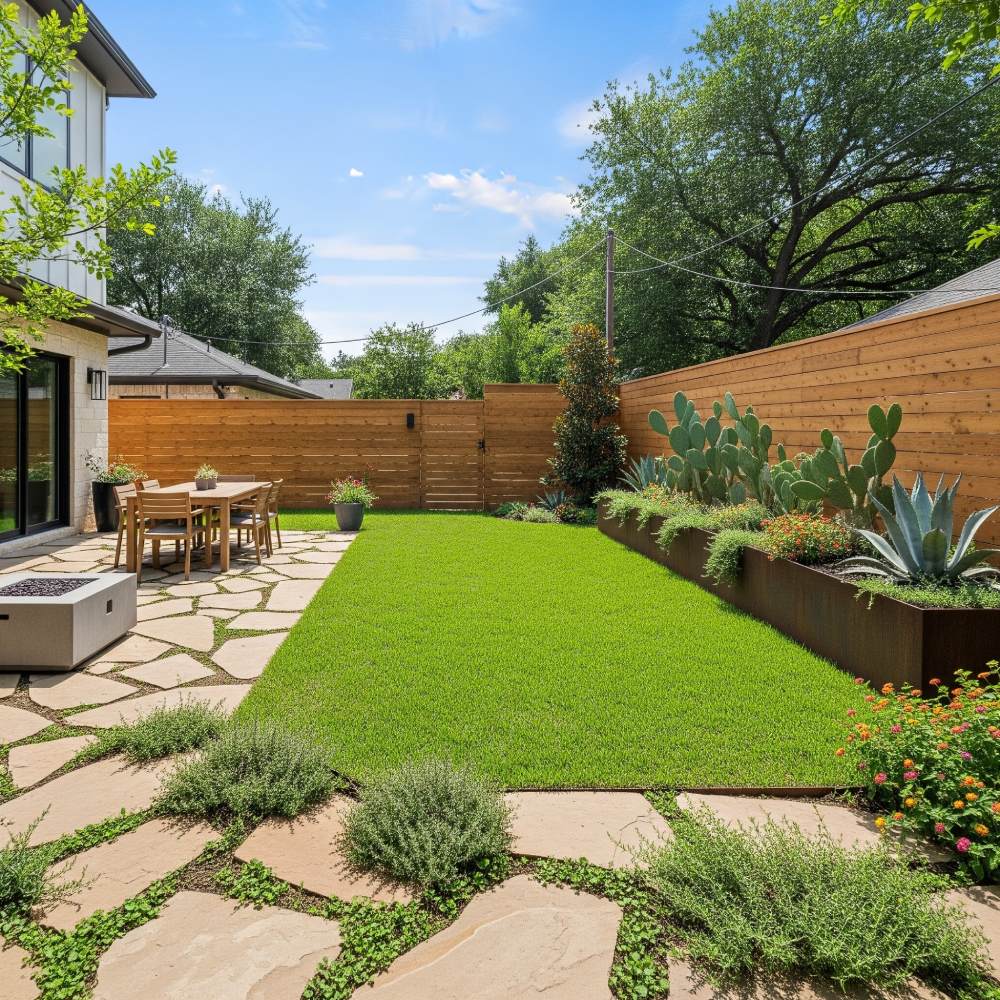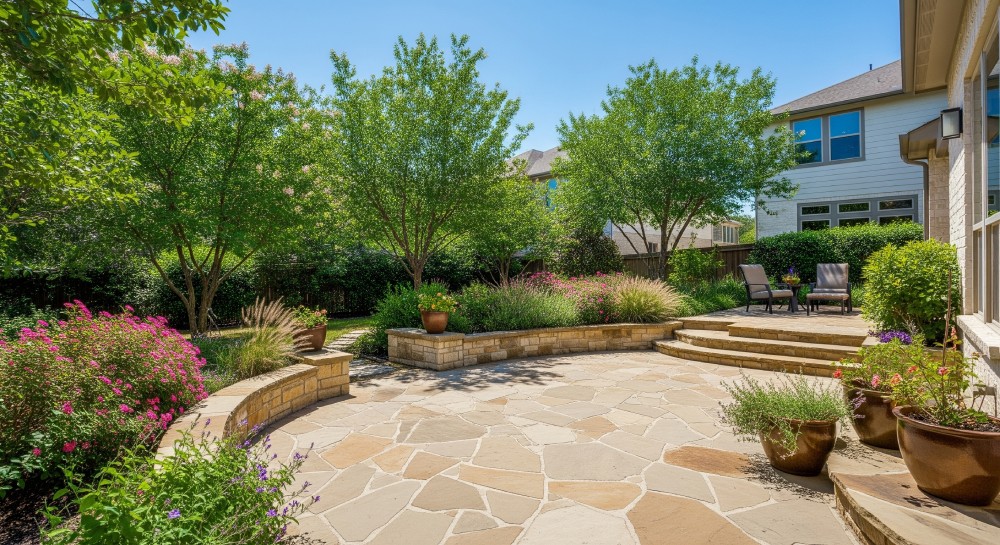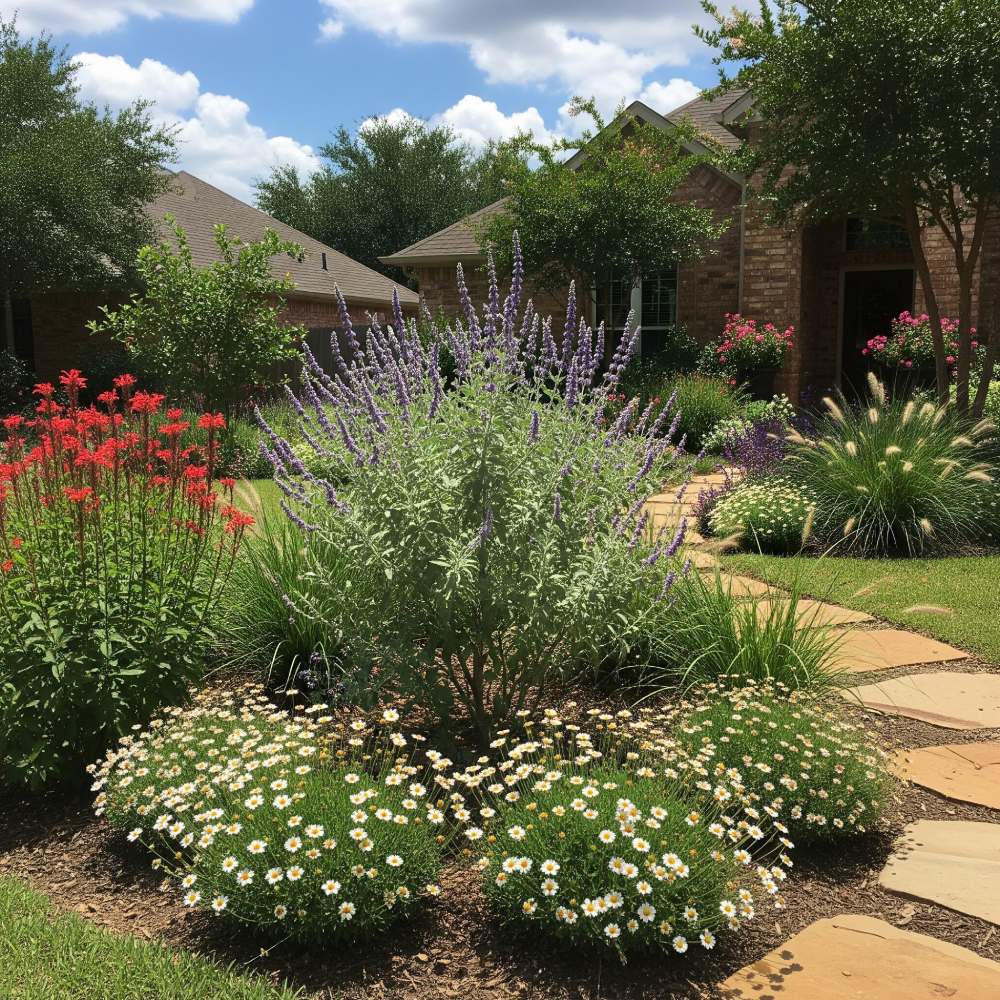
Top 5 Native Shrubs to Add Color to Your Texas Landscape This Fall
Top 5 Native Shrubs to Add Color to Your Texas Landscape This Fall
As the weather finally cools down in Austin, it’s the perfect time to think about how your yard looks in the fall. Around this time of year, a lot of homeowners ask me how they can add color to their landscape without signing up for a ton of maintenance. My answer is almost always the same: go native.
Here at GardenGOAT, we’ve designed and installed hundreds of landscapes across Central Texas, and we’ve seen firsthand how well native shrubs perform. They’re made for this climate—built to handle the heat, survive the dry spells, and still bring a ton of seasonal color. In this post, I’ll walk you through five of my go-to native shrubs for fall color, plus a few design and care tips we use on our own projects.
Table of Contents
- Why Native Shrubs Are Perfect for Austin’s Fall Landscapes
- Our Top 5 Native Shrubs for Vibrant Fall Color
- Benefits of Native Shrubs for Homeowners
- How GardenGOAT Can Design Your Colorful Fall Landscape
Why Native Shrubs Are Perfect for Austin’s Fall Landscapes
Once you’ve lived in Austin long enough, you realize our weather doesn’t exactly play nice with imported plants. Between the limestone-heavy soils, high summer temps, and inconsistent rainfall, a lot of traditional landscape plants just struggle.
That’s where native shrubs shine. They’ve adapted to Central Texas soils (usually around pH 7.5–8.5) and can handle long dry periods thanks to deep root systems and smart leaf structures that reduce water loss. In our experience, that means 50–70% less watering and maintenance compared to most non-native species.
They’re also pest-resistant, drought-tolerant, and still bring plenty of color. Once established, these plants practically take care of themselves—and that’s something every homeowner appreciates.
Our Top 5 Native Shrubs for Vibrant Fall Color
Here are five native shrubs we regularly recommend and install for Austin landscapes. Each brings its own kind of beauty and personality to the yard.
1. Flameleaf Sumac (Rhus lanceolata)
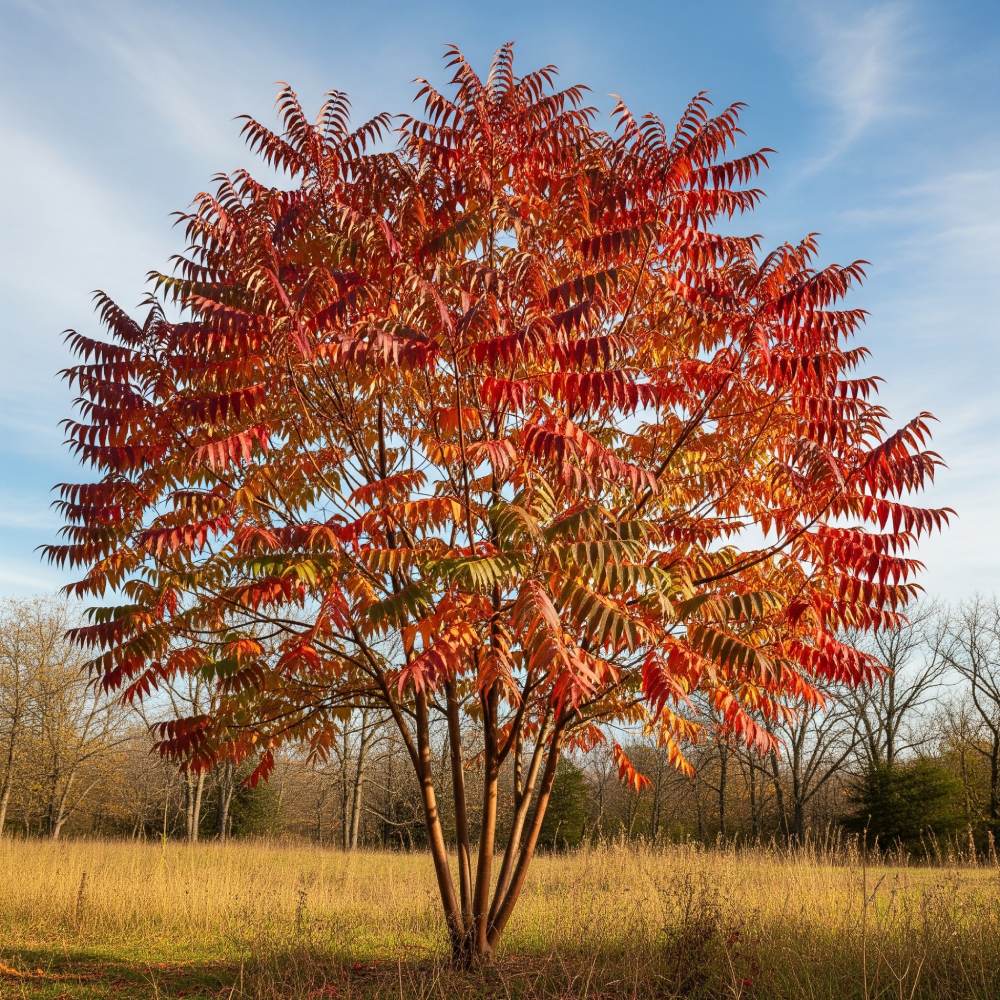
If you want a shrub that really makes a statement in fall, this is it. Flameleaf Sumac can reach 10–15 feet tall and wide, with bold red-orange foliage that lights up the yard. We often use it on slopes or along property edges since its root system helps control erosion. It’s incredibly low-maintenance—just prune lightly in late winter to keep a clean shape. One of my favorite features is how its leaves naturally minimize water loss, making it perfect for full-sun areas that bake in summer.
2. American Beautyberry (Callicarpa americana)

This one’s a classic, and for good reason. The vivid purple berries show up right as other plants start fading, and they’re a magnet for birds. It does best in part shade but tolerates full sun just fine. We usually plant Beautyberry near patios or walkways so homeowners can enjoy the color up close. Just make sure you don’t overwater—it prefers Texas-style tough love. Cut it back in early spring, and it’ll come back fuller every year.
3. Cenizo (Leucophyllum frutescens) — Texas Sage

If you’ve spent any time driving through Hill Country, you’ve seen this one. Texas Sage bursts into purple blooms after rain, and it’s as hardy as they come. We love using Cenizo in borders or as a backdrop for smaller perennials. Its silvery leaves don’t just look good—they actually reflect sunlight to reduce heat stress. It’s a true “set it and forget it” plant, as long as you don’t prune it too aggressively.
4. Evergreen Sumac (Rhus virens)
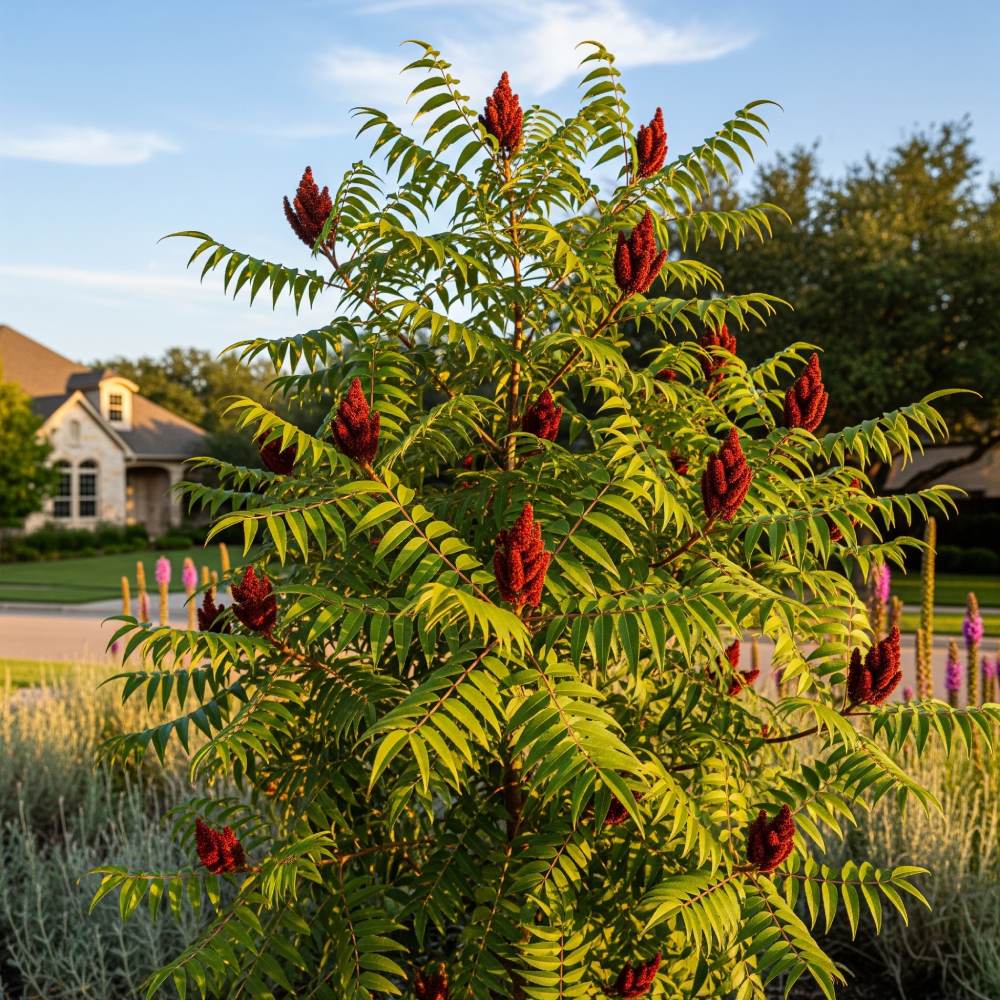
This shrub stays green most of the year, but in fall, the leaves shift to bronze-red tones that look great against limestone or native stone features. It also produces red berries that birds love. We often group several together to form a natural privacy screen. Once it’s established, it barely needs supplemental water, thanks to its deep root system. It’s a dependable, subtle performer that anchors the landscape year-round.
5. Wax Myrtle (Morella cerifera)
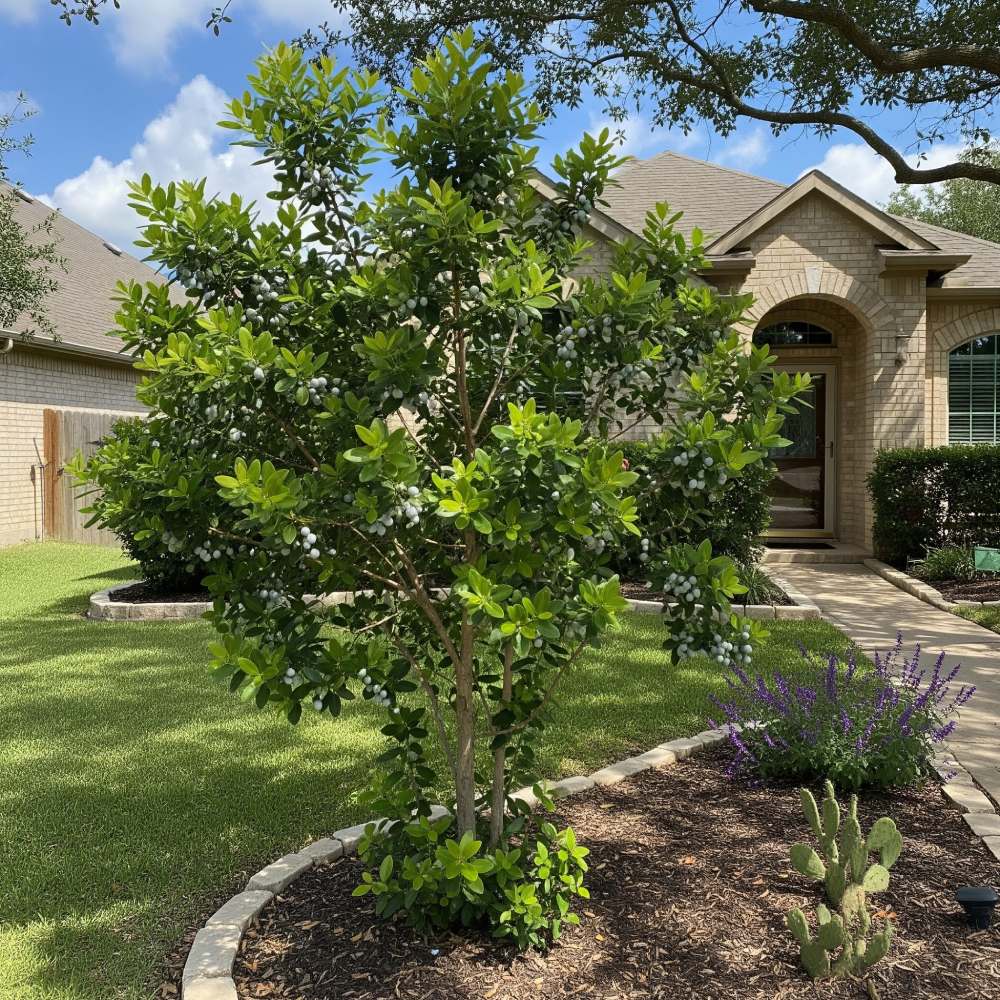
This one’s technically native to East Texas but performs beautifully in Austin with a bit of care. It grows 10–20 feet tall, smells great when you brush past it, and has blue-gray berries that give a nice fall accent. What I like most is its versatility—it does well in both sun and partial shade and improves the soil by fixing nitrogen. The leaves even contain natural oils that help keep insects away, so it’s a great choice for low-maintenance hedging.
Benefits of Native Shrubs for Homeowners
Beyond the looks, these plants make your life easier. Most of our clients notice their water bills drop and their landscapes hold up better during droughts. Native shrubs also invite pollinators and songbirds, which adds another layer of life to your yard.
When designed properly, a native-based landscape can cut maintenance costs nearly in half and still look great year-round. That’s the kind of long-term return most homeowners don’t think about until they experience it firsthand.
How GardenGOAT Can Design Your Colorful Fall Landscape
At GardenGOAT, we’ve transformed over 250 properties across Austin, many of them focused on seasonal color and native planting. Our design process combines technical know-how with a real understanding of how homeowners use their outdoor spaces.
When we plan a fall-focused landscape, we look at sunlight patterns, drainage, and soil texture before choosing the right mix of shrubs and hardscape elements. Every project starts with a quick discovery call and ends with a landscape that thrives through Texas weather.



